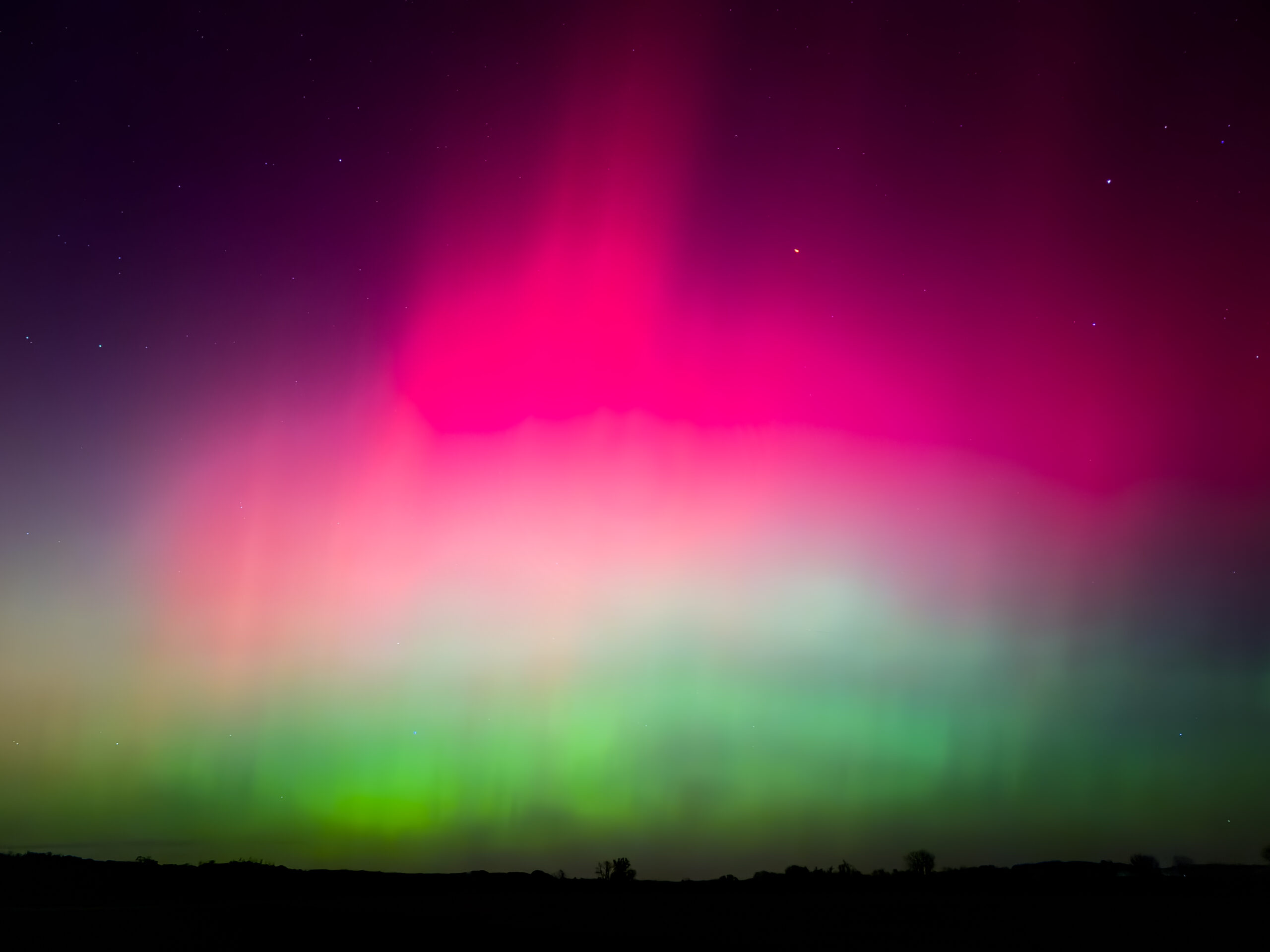The Northern Lights appear across the globe, including in Crescent, IA. around 10 p.m. on Nov. 11.
A rare wave of northern lights appeared over Omaha last week, giving Creighton students an unexpected chance to see the colors of an aurora from campus — something typically reserved for far more northern skies.
Christopher Anson, Ph.D., a physics professor who also teaches astronomy at Creighton, said auroras this far south are unusual but become more likely as the sun nears the peak of its 11-year activity cycle. The display became visible Nov. 11 when a strong solar storm pushed auroral activity far enough south to reach Nebraska.
“The amount of activity on the sun varies every 11 years,” Anson said. “During these very large storms like we had last week, particles reach our atmosphere and cause it to glow.”
Anson drove north of Omaha to view the aurora after missing earlier displays last summer and fall.
“This time they were much clearer when I went,” he said. “It was pretty interesting to see the colors this time.”
According to the National Oceanic and Atmospheric Administration’s Space Weather Prediction Center (NOAA), the geomagnetic storm that made such a southern aurora possible is measured on a five-point scale, with the most intense storms (rated G4 or G5) capable of pushing auroras deep into mid-latitudes.
On the NOAA scale, G4 (“severe”) geomagnetic storms occur on average “100 per cycle (60 days per cycle)” per their space-weather documentation. G5 (“extreme”) storms are far rarer — about 4 days per 11-year cycle.
NOAA’s research also shows how low the aurora can reach during strong storms: for a G4 event, “aurora has been seen as low as Alabama and northern California.”
And as the storm intensifies, the normally high latitude auroral “oval” expands toward the equator.
One Creighton student who saw the aurora was Sydni Liera, a College of Arts and Sciences sophomore. She stepped outside of Davis Square around 9 p.m. after receiving a photo from her roommate.
“I got so excited that I ran outside, and I saw the colors,” Liera said. “I’ve never seen anything like that before … it was just captivating.”
Because of light pollution, Liera said she could only pick out faint hues with her eyes at first — but using her phone’s night-exposure mode, she captured richer shades on camera.
Anson explained that the red and green colors students saw come from charged solar particles colliding with oxygen in Earth’s upper atmosphere. Lower altitudes produce more green light, while higher altitudes (around 90 to 150 miles up) generate more red. Those details align with what scientists at NOAA and other agencies understand about auroral emissions.
He also warned that strong solar storms can have real-world impacts: they can disrupt radio communication, stress power grids and pose risks to astronauts traveling outside Earth’s magnetic shield.
Because the sun is still near its solar maximum — the active phase of its 11-year cycle — Anson said more auroras could be in store.
“It’s certainly possible … but it’s hard to say if we will or not,” he said.
